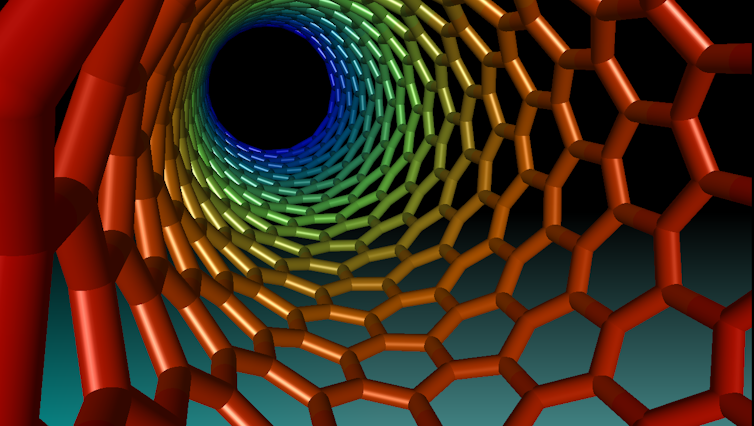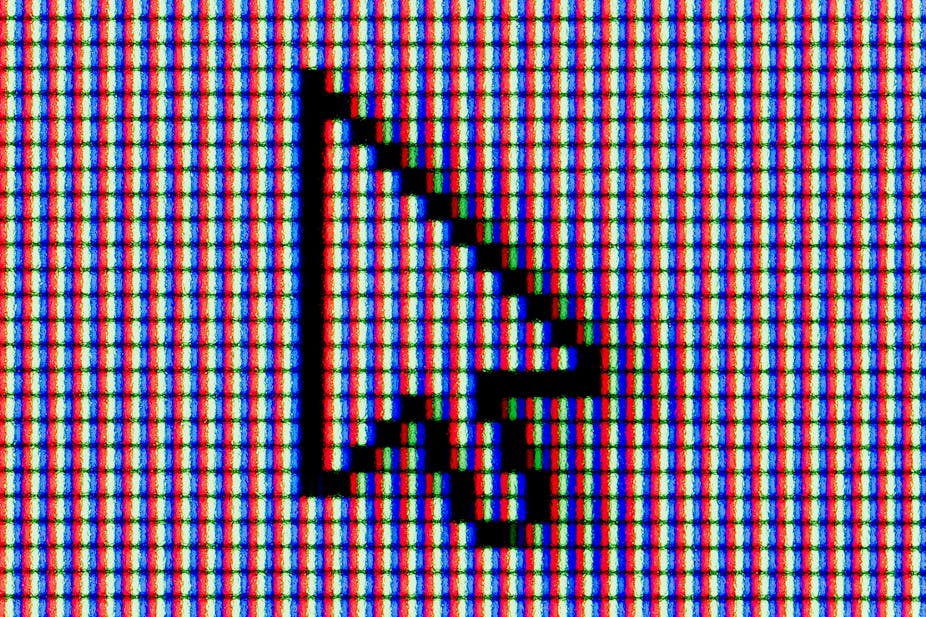Theoretical physicists are caricatured in the popular imagination as only involved in abstruse and difficult-to-imagine topics. But some of these theoretical physicists are involved in something closer to home: using artificial materials to understand how life works.
One of the aims of doing so, they hope, is to invent new materials that can mimic some of the properties of living organisms. Spider silk, for example, is much stronger than the polymer kevlar, the strongest bullet-proof material. And whereas the skin of most living organisms is self-repairing, if you smash most artificial materials, there is little to do other than “phone the man”.
The essence of life
Not long ago the distinction between the living and non-living was simple to observe, if difficult to define. Religions endowed us with souls, which somehow gave us our ability to perceive the world. But the soul, in whatever living thing, was thought (and still is by many) to be independent of the material that the organism was made from and which departed when the organism died.

Medieval philosophers theorised about the existence of an abstract distinction between life and non-life. In so doing, they divided themselves into monists, who denied a sharp divide, and the dualists, who affirmed it. In the 19th century, physicists such as Otto Lehmann, regarded as having discovered liquid crystals – a material that appears in a state between conventional liquids and solid crystals – and biologists such as Ernst Haeckel, speculated on a connection between physical chemistry and physiology.
But these scientists’ perceptions of underlying reality attracted the mockery of contemporaries. This was partly because not enough physics and chemistry was known at the turn of the 20th century to provide a detailed mechanical picture of the operation of living organisms, nor even to provide convincing evidence that such a picture was possible. So reductionist approaches such as those offered by Lehmann and Haeckel needed as much faith as the religious picture it hoped to replace.
It is different now. One of the top research councils in the UK is supporting a “physics of life” network, dedicated to winkling out the links between physical and biological law. With the rise of biochemistry and biophysics, theoretical physicists – through making mathematical models of key biochemical pathways, for example – can transform themselves in a trice into computational biologists, whose goal is to illuminate the function and mechanism of the 30,000 proteins found in the human body. Or, if the goal is to be more lucrative and short-term, they may digitally model the interactions between large molecules and design new drugs without sullying their hands in a laboratory.
These days, headlines speak of organs being replaced by the fruit of industrial artifice, enzymes replaced by chemicals, and man-machine interfaces that improve the operation of our original “god-given” body. The counterpart of this medical effort is a worldwide programme to construct biomimetic materials. These function by copying tricks developed by evolution over the aeons, rather than by waiting for an idea from a bright-eyed human.

And yet, what has remained missing is an overall picture of how various well-understood physical mechanisms can combine together in detail to perform some of the precise magic required for the operation of a living organism or a living cell – which brings us back to the find that distinction between the living and the non-living. Key to this is an understanding of how ordinary physics can lead to the kind of self-organising structure seen in living tissue.
It had been thought that ordinary physics favoured uniform structures, applied in both space and time. Just think of beautiful circular stars or perfectly shaped orbits of planets around the sun. But living organisms are the very antithesis of this, with different cell types that have precise function dotted around the body in just the right place. In some way nature seems to abhor uniformity. Our heartbeats and our breathing are regulated by different periodic cycles. Cells divide, on time scales that depend on temperature, type of organism and so on. On a longer time-scale there is the sleep-wake cycle dictated by the circadian rhythm, on longer scales still are menstrual cycles, and on yet longer scales, organisms are born and die.
Reconstructing the bits of life
A new study by Felix Keber of Technische Universität München and his colleagues, and published in Science, provides a key step to explain this discrepancy between uniformity predicted by physics and non-uniformity observed in biology. They construct and provide a precise mathematical description of a model physical system – not in itself biological, but nevertheless with common design features – with a biological energy source. It is made from materials which occur in living cells and oscillates, just like a model-cell would.
Keber’s physical system consists of vesicles, small closed bags of biological membranes, which do occur in real biological systems but which can be constructed outside the cell. Proteins inside the membrane form microtubules, long thin rod-like molecules which then adsorb on to the inside of the vesicle surfaces, lying down on the surface like hair combed on someone’s head. Because the microtubules are aligned, they behave like nematic (bundles of thread-like) liquid crystals, with properties rather like those of liquid crystals in the flat screens of TVs, computers and mobile phones.

The resulting “nematic vesicles” turn out to have quite dramatic properties: just as hair that is combed may leave bald spots where the combing direction is ill-defined, there are bound to be points on the vesicle surface that have defects. In Keber’s system, they found four such defects.
The number of defects is a result of “topology”. Topology was originally developed in the 19th century to discuss the mathematical theory of shapes, and is best known outside mathematics for the analysis of knots. But it was appropriated by theoretical physicists in the 1970s to discuss defects in magnetism, superconductivity, and liquid crystals.
The defects can be studied by providing them with biological energy. So if the vesicle contains the the body’s energy molecule (adenosine triphosphate, or ATP), then energy can be pumped into the two-dimensional liquid crystal at the vesicle surface, creating stress in the nematic pattern.
This energy creates stress on the vesicle surface causing the defects to move, a bit like how stress in the earth’s crust causes earthquakes. The theoretical physicists on the team were then able to construct a simple picture of the dynamics, which concentrated on the defect motion.
Revelatory oscillations
So what Keber’s work has shown is that when physical systems are put to work in a biological system, close observations can provide a window in to the non-uniformity of life. And, more importantly, Keber’s work gives us a mathematical understanding of these systems, which could be further developed. Understanding how nature evolved such an exquisite system is not easy and will take a long time, but work such as this is a significant step forward.
The study involved inputs from biology, chemistry, physics and mathematics, and despite an enduring popular belief, the secrets of life are clearly not there to be revealed by biologists alone.
There is also an interesting historical moral from this story. Liquid crystal pioneer Lehmann died in 1922. In addition to being a top-quality scientific pamphleteer, he was also a liberal intellectual with a penchant for asking big questions and creating controversies.

If asked at the Pearly Gates how he expected his work to be remembered, Lehmann would surely have been astounded that his work on liquid crystals had created the scientific basis for a multi-billion dollar engineering industry. On the other hand, all his later writings testify to his belief that the physics of liquid crystals would establish categorically and unambiguously the missing link between the animate and inanimate spheres of scientific endeavour.
Lehmann knew about vesicles, but of “active matter” and “topology” he was ignorant. In the library of the great upstairs, Otto Lehmann will be reading Keber’s study, regretting that the scientific knowledge of his day was not adequate to confirm his hypothesis, but somewhat smugly smiling to himself that his faith in his hypothesis was clearly justified.

